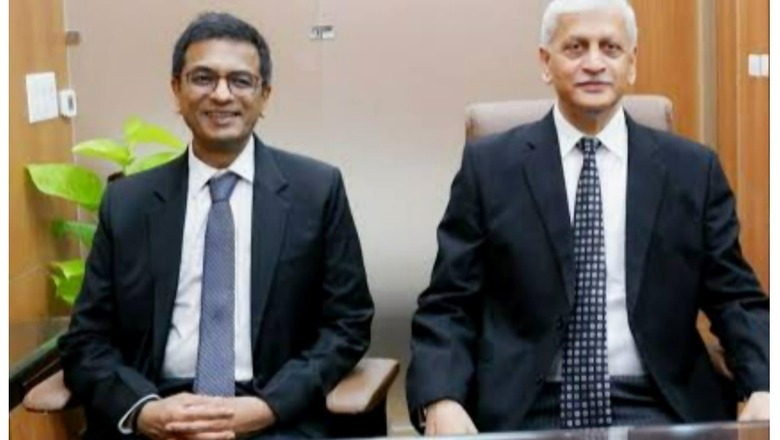
views
Chief Justice of India (CJI) Uday Umesh Lalit on Tuesday recommended Justice DY Chandrachud as his successor in a full court meeting held by the Judges of the top court.
As per convention, the senior-most judge of the Supreme Court becomes CJI. Upon recommendation by CJI Lalit and appointment by the President, Justice Chandrachud would assume charge as the 50th Chief Justice of India on November 9 for a little more than two years until November 10, 2024.
How is the Successor Named?
While the Constitution of India does not mention any procedure for appointing the CJI, the naming of the successor relies on convention.
Article 124 (1) of the Constitution merely says, ““there shall be a Supreme Court of India consisting of a Chief Justice of India.” It also says that every Judge of the Supreme Court shall be appointed by the President.
As per convention, the outgoing CJI recommends his successor, strictly based on seniority. The Union Law Minister then forwards the recommendation to the Prime Minister who, in turn, advises the President.
Seniority in this case is not defined by age, but by the number of years a judge has been serving in the top court of the country, a report by Moneycontrol says.
In cases where two judges have the same seniority, other factors, like who among the two has more years of experience in the High Court or whether any of them was nominated from the bar directly, or who took the oath first, come into play, the report says.
The Procedure
The actual procedure to appoint the next CJI is laid out in the Memorandum of Procedure (MoP), which was drafted in 1999 and is the playbook agreed upon by the government and the judiciary on the appointment of judges.
As per the MoP, the ball is set rolling when the Minister of Law and Justice writes to the CJI seeking his recommendation for his successor. It says, “Union Minister of Law, Justice…would, at the appropriate time, seek the recommendation of the outgoing Chief Justice of India for the appointment of the next Chief Justice of India”. By convention, the process begins a month before the date of retirement of the incumbent CJI.
If the incumbent CJI has any doubts about the fitness of the senior-most judge to hold the office, he can consult a collegium. Once the recommendation is sent the Law Minister, he puts it up to the Prime Minister who advises the President.
As per the process laid down in the MoP, “after receipt of the recommendation of the Chief Justice of India, the Union Minister of Law, Justice…will put up the recommendation to the Prime Minister who will advise the President in the matter of appointment”.
The Exceptions
Even before the MoP was agreed upon, the senior-most judge was appointed to be CJI. Two notable exceptions to the conventional procedure are the appointments of Justices A N Ray and M H Beg, who both became CJIs during the tenure of Indira Gandhi as Prime Minister in the 1970s.
Gandhi’s government recommended the appointment of Justice A N Ray as CJI in 1973 superseding three more senior judges, Justices J M Shelat, K S Hegde, and A N Grover, the Indian Express reports. Justice Ray was considered more favourably disposed towards Indira’s regime than the other judges. In 1977, the government yet again superseded Justice H R Khanna and appointed Justice M H Beg as CJI.
Read all the Latest News India and Breaking News here

















Comments
0 comment